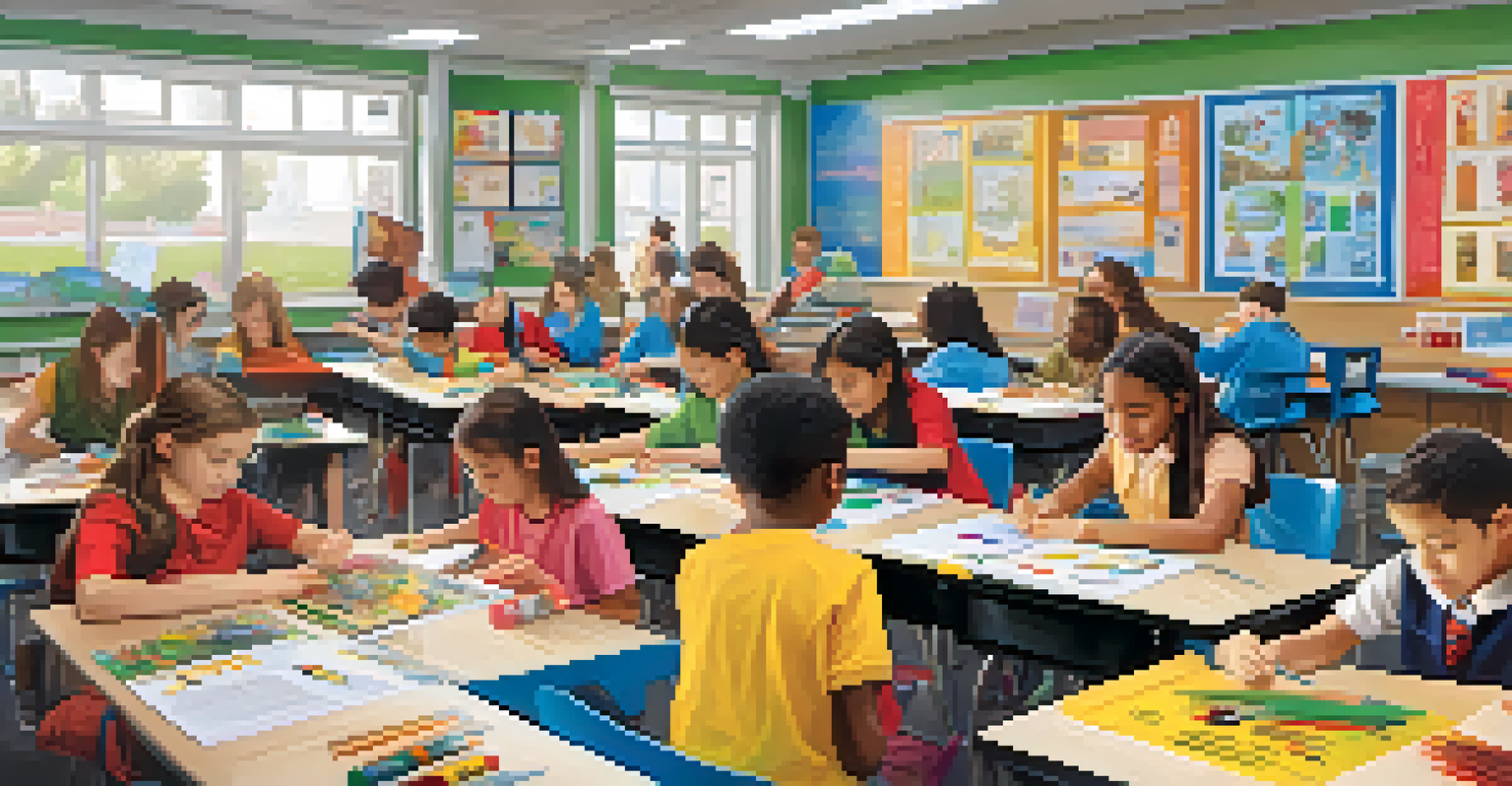Creating Engaging Learning Experiences for Yourself

Understand Your Learning Style for Better Engagement
Everyone learns differently, and understanding your unique learning style can make a huge difference in how you absorb information. Do you prefer visual aids, hands-on experiences, or perhaps auditory cues? Identifying your preferred method allows you to tailor your learning experiences to suit your strengths.
Tell me and I forget. Teach me and I remember. Involve me and I learn.
For instance, if you're a visual learner, incorporating videos, infographics, or diagrams can enhance your understanding of complex concepts. On the other hand, if you learn best through practice, engaging in real-life applications or simulations can solidify your knowledge. The key is to experiment and find what resonates with you.
By embracing your learning style, not only do you boost your engagement, but you also increase retention. When you're actively participating in the learning process, it becomes less of a chore and more of an enjoyable adventure.
Set Clear Goals to Stay Motivated
Setting clear and achievable goals is like having a map for your learning journey. Without destination points, it can be easy to feel lost or unmotivated. When you establish specific goals, you create a sense of purpose that propels you forward.

For example, instead of saying, 'I want to learn Spanish,' a more engaging goal would be, 'I want to hold a 15-minute conversation in Spanish within three months.' This gives you a clear target and allows you to track your progress along the way. Celebrate small victories to keep your momentum going.
Know Your Learning Style
Understanding whether you're a visual, auditory, or kinesthetic learner can significantly enhance your engagement and retention.
Moreover, having clear goals helps you prioritize your time and resources effectively. When you can see the end in sight, you're more likely to stay engaged and committed to the learning process.
Incorporate Interactive Elements for Hands-On Learning
Interactive elements can transform a passive learning experience into an engaging one. Whether it’s through quizzes, discussion groups, or hands-on activities, getting involved actively helps reinforce what you learn. Think of it like cooking; you can read a recipe, but nothing beats the experience of actually cooking the dish.
Learning never exhausts the mind.
For instance, if you're learning a new software program, try using it while following along with a tutorial instead of just watching. This hands-on approach not only boosts engagement but also helps you remember information longer. Remember, practice makes perfect!
Interactive learning fosters collaboration and discussion, which can lead to deeper insights. Sharing your thoughts with others can spark new ideas and enhance your understanding, making the entire experience more enriching.
Utilize Technology to Enhance Your Learning Experience
In today's digital age, technology offers a wealth of resources to enhance your learning experience. From online courses to interactive apps, there’s something out there for every type of learner. Embracing technology can open doors to innovative and flexible learning methods.
For instance, platforms like Khan Academy or Coursera allow you to learn at your own pace and revisit challenging topics as needed. Additionally, educational podcasts and YouTube channels can provide valuable insights while you’re on the go. It’s about finding the right tools that fit your learning preferences.
Set Clear Learning Goals
Establishing specific and achievable goals provides direction and motivation, making your learning journey more purposeful.
However, it’s important to strike a balance. While technology can be incredibly beneficial, too much screen time can lead to distractions. Find ways to integrate tech into your learning without letting it take over.
Create a Structured Learning Environment for Focus
Your learning environment plays a crucial role in how effectively you absorb information. A structured and organized space can help minimize distractions and create a conducive atmosphere for learning. Think of it as setting the stage for a performance; a cluttered space can lead to a cluttered mind.
Consider designating a specific spot for learning, whether it's a quiet corner of your home or a cozy coffee shop. Make sure it's well-lit and free of distractions, so you can focus fully on the task at hand. Establishing a routine can also signal your brain that it’s time to learn.
Furthermore, don’t underestimate the power of ambiance. Soft background music or the right scent can enhance your concentration and make the experience more enjoyable. Crafting a personalized learning environment can make a world of difference.
Connect Learning to Real-World Applications
One of the most effective ways to engage in learning is by connecting it to real-world applications. When you see how knowledge can be applied outside the classroom, it becomes more relatable and meaningful. It’s like turning theory into practice; the lessons stick better when you can visualize their impact.
For example, if you’re studying marketing, try to apply strategies to a personal project or a small business idea. This hands-on approach not only solidifies your understanding but also gives you practical experience that can be valuable later on.
Connect Learning to Real Life
Linking theory to real-world applications makes learning more relatable and helps solidify your understanding.
Moreover, seeking out internships or volunteer opportunities related to your field of study can deepen your learning experience. Real-world connections can inspire you and show you the relevance of what you’re learning, making the process more engaging.
Reflect on Your Learning Journey for Continuous Improvement
Taking the time to reflect on your learning experiences is essential for growth. Just like a coach reviews game footage to improve strategy, reflecting allows you to assess what worked well and what didn’t. This practice can help you refine your approach and enhance future learning experiences.
Set aside a few minutes at the end of each week to jot down your thoughts. What concepts resonated with you? What challenges did you face? This habit of self-assessment not only reinforces your learning but also fosters a growth mindset.

Additionally, sharing your reflections with others can provide external perspectives that enhance your understanding. Engaging in discussions about your learning journey can lead to new insights and keep you motivated to continue evolving.